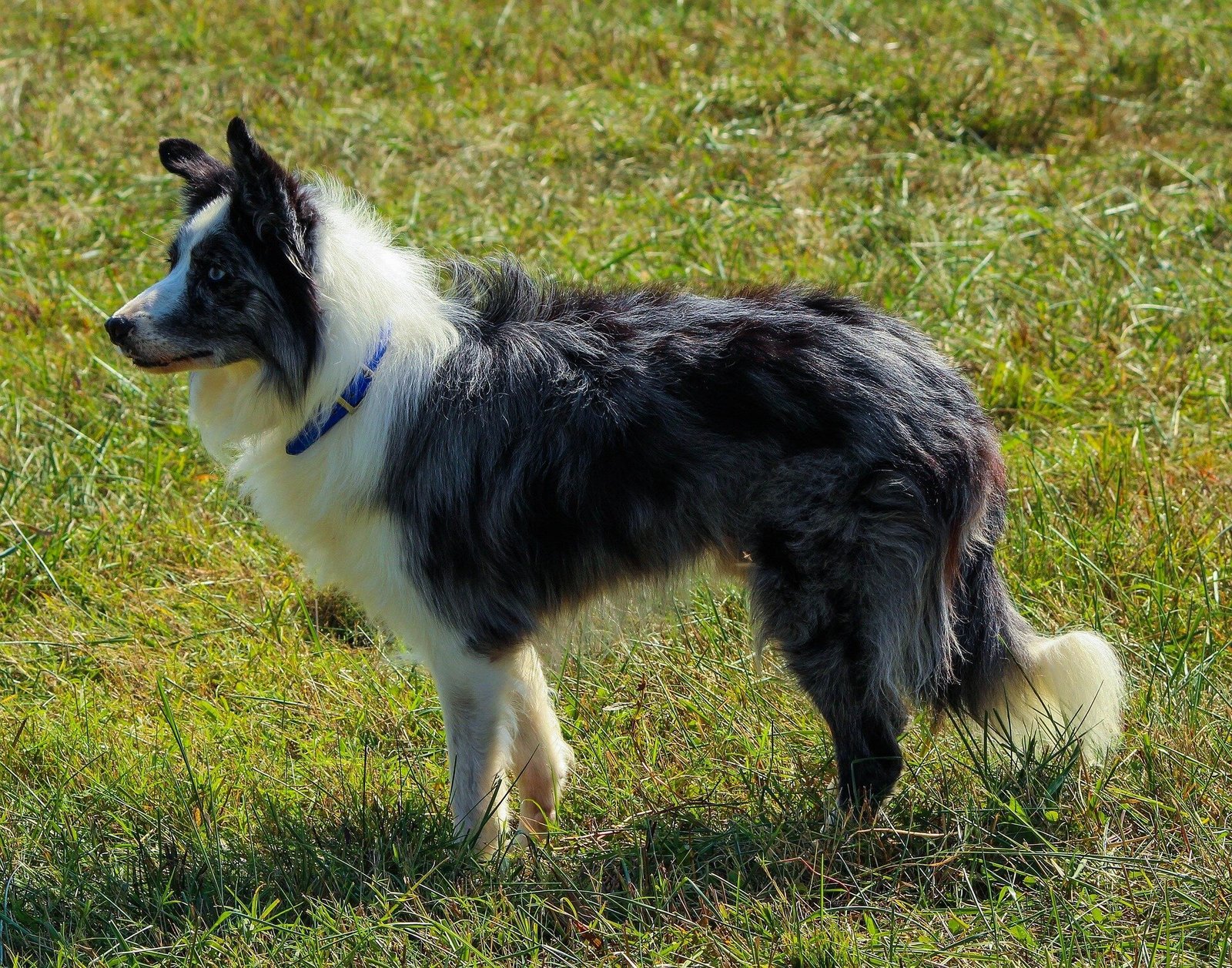On windswept fields where flocks roam freely, a single dog commands the landscape—not with brute force, but with grace, intelligence, and uncanny instinct. Herding dogs have long been admired for their ability to corral sheep, steer cattle, and manage other livestock with extraordinary precision. But what makes these dogs so adept at their work? Is it training alone, or is something more fundamental—something written in their DNA—at play?
In a landmark study that blends cutting-edge genomics with centuries-old canine traditions, two life scientists from Gyeongsang National University in South Korea, Hankyeol Jeong and Jaemin Kim, along with NIH geneticist Elaine Ostrander in the United States, have uncovered the genetic underpinnings that make certain dogs natural-born herders. Their work, published in Science Advances, marks a pivotal step in unraveling the biological foundation of complex animal behavior and offers a rare glimpse into how genes sculpt cognition, motor skills, and instinct itself.
When Nature and Nurture Collide
The concept of dog breeds is itself a human invention, the product of millennia of artificial selection. By choosing which dogs to mate, humans have shaped canines into hundreds of distinct breeds, each with its own form and function. Among them, herding dogs—such as Border Collies, Australian Shepherds, and Belgian Malinois—stand out as an elite group engineered not for companionship or combat, but for cerebral agility, nuanced control, and situational awareness. Their defining traits include social intelligence, remarkable trainability, and a motor coordination so refined it borders on artistry.
But where in the dog’s genome do these traits lie hidden?
To answer this, the international team embarked on a genomic odyssey that involved sequencing the entire DNA of 103 dog breeds—12 classified as herding and 91 from other groups including toy, hound, working, and sporting breeds. They then conducted comparative analyses to pinpoint what separates the mental and behavioral makeup of a border collie from, say, a dachshund.
The result was not a single “herding gene,” but a constellation of genetic variants—biological footprints that together sketch the profile of a natural herder.
The EPHB1 Gene: A Cornerstone of Canine Intelligence?
One of the standout discoveries in the study was a gene known as EPHB1, a neurological gene implicated in spatial memory in humans. The researchers found significant variation in this gene among herding breeds, particularly the Border Collie, widely regarded as the Einstein of the canine world. Spatial memory—the ability to remember the physical layout of environments and navigate them effectively—is a critical skill in herding. A dog must remember the position of animals, gaps in fences, and the body language of a skittish sheep, all while calculating the best path forward.
The involvement of EPHB1 suggests that herding ability may stem from an evolved capacity for spatial navigation and memory. But that’s not all. Other genes identified in the study are associated with social communication, attention span, motor coordination, and even impulse control—the full behavioral toolkit of an accomplished herder.
By cross-referencing canine data with the NHGRI-EBI GWAS Catalog, a human database of genes and their associated traits, the team was able to connect canine gene variants with their human analogs. This comparative genomics approach not only validated the study’s findings but also opened the door to something far more ambitious: using dog genetics to shed light on human cognition and behavior.
Herding Isn’t Just Herding
Another fascinating dimension of the study was its recognition of diversity within herding breeds. Not all herders operate the same way. The term “herding dog” covers a spectrum of subtypes, including drovers, heelers, and gatherers, each employing different tactics. Droving dogs, for example, push animals from behind, while gatherers flank and circle.
By focusing on the Border Collie, the researchers zeroed in on a breed with a highly evolved and sophisticated herding style—one that uses eye contact, nuanced body movements, and anticipatory planning to manage livestock with minimal physical aggression. This type of herding isn’t just instinctual—it’s almost strategic, requiring the dog to process information, adapt to new scenarios, and sometimes even predict what the flock will do next.
This level of mental acrobatics points not just to genetic specialization, but to what may be one of the most advanced expressions of domesticated animal intelligence.
What Dogs Teach Us About Ourselves
Though dogs were the focus of this study, its implications reach far beyond the canine world. Understanding how genes shape behavior in dogs—who have co-evolved with humans for tens of thousands of years—can provide a unique mirror into our own biology. As lead author Hankyeol Jeong noted, “Dogs share a large number of behavioral and neurological genes with humans, but they express them in ways that are sometimes clearer to analyze because of breed specialization.”
Indeed, by mapping behavioral traits like sociability, memory, and motor skills to specific genes in dogs, scientists can generate hypotheses about how similar genes may function in humans. For example, if EPHB1 is central to spatial memory in dogs, might mutations in its human counterpart be associated with conditions like spatial disorientation, Alzheimer’s disease, or attention disorders?
Elaine Ostrander, a pioneer in canine genetics at the NIH, has long advocated for the use of dog breeds as natural models for genetic research. “Every dog breed is like a living experiment in trait development,” she once remarked. “The breed standards, the selection pressures—these have all created genomes that are tailor-made for investigating how biology gives rise to behavior.”
The Genomics Era of Canine Science
The tools used in this study reflect how far genomics has come. Whole-genome sequencing, once an expensive and time-consuming endeavor, is now increasingly routine. The researchers didn’t just look at snippets of DNA—they examined the entire genomes of over a hundred breeds. This level of resolution allowed them to detect subtle but meaningful variations that previous methods might have missed.
Furthermore, the cross-referencing of data with human genomic databases illustrates the emerging interdisciplinarity of genetic research. Animals are no longer studied in isolation. Instead, their genetics are compared, contrasted, and integrated into broader biological models that span species.
The collaboration itself—spanning South Korea and the United States—also underscores the global nature of modern science. It takes multinational effort to unravel complex questions like the genetic architecture of behavior, and this study represents a model of that cooperation.
The Future of Behavioral Genomics
This study opens new doors not just for understanding dogs, but for influencing how we breed and train them. If certain genes are reliably associated with behavioral strengths or weaknesses, breeders might one day use genomic screening to select for traits like trainability, working efficiency, or even emotional resilience.
However, ethical questions loom large. While it’s tempting to imagine engineering the “perfect herding dog” through genetic editing or selective breeding, such approaches risk reducing dogs to mere tools, stripping away the richness of their personalities and reducing biodiversity in the process.
Beyond dogs, this research invites a broader reevaluation of behavior in all animals. What is instinct, if not evolution’s programming? How does a neural pathway become a personality? As genomics continues to advance, we may find ourselves closer to answers—and even closer to questions we never thought to ask.
A Genetic Symphony in Fur and Flesh
At its heart, this research is a reminder that behavior is not a simple matter of nature or nurture, but a complex symphony where genetics and experience co-compose the melody. Herding dogs are not just trained; they are born with neural architectures wired for observation, decision-making, and action. They are not taught to herd so much as they are awakened to it.
And now, for the first time, we can see the sheet music.
The field of behavioral genomics is still young, but thanks to projects like this, we are beginning to understand how molecules build minds. In the dance of a dog guiding sheep across an open field, we now glimpse not just skill or instinct, but biology in motion—a genetic legacy that spans millennia, shaped by humans, refined by evolution, and finally decoded by science.
Reference: Hankyeol Jeong et al, Genomic evidence for behavioral adaptation of herding dogs, Science Advances (2025). DOI: 10.1126/sciadv.adp4591






